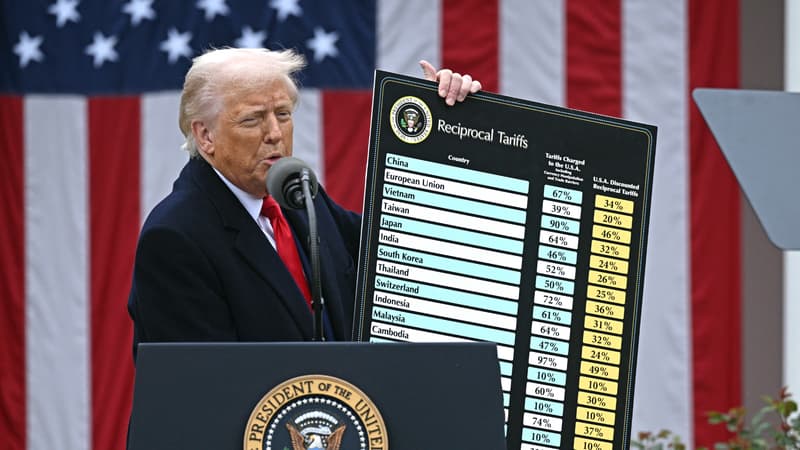The discussions are fair. The main commercial partners of the United States, with the exception of China, Mexico and Canada, subject to other deadlines, negotiate a lot to dodge the heavy harangues that Donald Trump threatens to impose their products.
His suspension expired on July 9, but the president announced on Friday a surcharge establishment on August 1.
General description of negotiations in progress.
The European Union awaits an extreme agreement
The EU said Thursday “ready to conclude an agreement”, shortly before the final meetings in Washington, of its Commission of Commerce, Maros Sefcovic, with senior US officials.
Donald Trump threatened the block with 27 countries with a 50%surcharge, much higher than the April project (20%). Notably criticizes Europeans to their American technological giants.
French economy minister, Éric Lombard, said on Saturday in the hope of an agreement “this weekend”, believing that, failing that, the EU should respond with “more vigor.”
Switzerland has a period
On April 2, Switzerland was in good place in the blacklist of Donald Trump, with a threat of punitive rights of 31%.
Bern’s government said last week that it began with the “principle” that the surcharge of the United States would remain at a current 10% rate provided that the negotiations continue.
Vietnam: an agreement and some unknowns
The agreement between Washington and Hanoi, announced on Wednesday with few details, allows Vietnam to escape the prohibitive surcharge initially established in 46%.
The increase will finally be 20%, but will increase to 40% for products that arrive from Vietnam, but performed elsewhere, a clause that is supposed to restrict the “transford” operated by Chinese groups.
But experts and companies wonder: what about the spare parts of a finished product? The risk is also to see Beijing adopt retaliation measures.
Japan: Trump sharpens his surcharges, rice and automotive at stake
The nearby ally of Washington and an important source of foreign investments in the United States, Japan, cannot escape New Surchaastens. Ryosei Akazawa, commercial envoy of Tokyo, has multiplied trips to Washington until the end of June.
Donald Trump was pessimistic about the probability of concluding an agreement for Wednesday. He criticizes Japan for not opening his market enough to rice vehicles and Americans. And it did not exclude going beyond the initially planned surcharge in 24%, which could reach “30%, 35%or any other number.”
India in a good position
Indian industrialists and exporters want to believe in an agreement to avoid a surcharge of 26%. Donald Trump had mentioned at the end of June the imminence of a “very large” agreement.
However, the final conversations still seem to emerge in agricultural and dairy products, “red lines” of India, as well as automotive pieces.
“I am not involved in the details of the discussions, but I listen to good things about negotiations with Europe. I listen to good things about negotiations with India,” Kevin Hasett, the main economic advisor of the White House.
South Korea not very optimistic
Already heavy due to the sector surcharge aimed at steel and the car, Seoul wants to avoid the 25% increase in the rest of its exports, and especially promises to Washington its cooperation in naval construction.
The expectation dominates
Other Asian savings, of which Cambodia reached up to 49%, do not know what to dance.
While Washington is the main guarantor of Taiwan’s security against Beijing, Taipei, who could suffer a 32%surcharge, points out the “complexity” of conversations.
“Despite some difficulties, including the complexity of customs problems, the negotiators of the two parties work diligently,” Taiwanese vice president Hsiao Bi-Khim said Wednesday.
According to the final press release project that AFP had access on Saturday, the BRICs, gathered at the top of Brazil, must also express their “serious concerns against the increase in customs and unilateral measures not Douanières that distort trade.” Not to mention the US President.
Source: BFM TV


